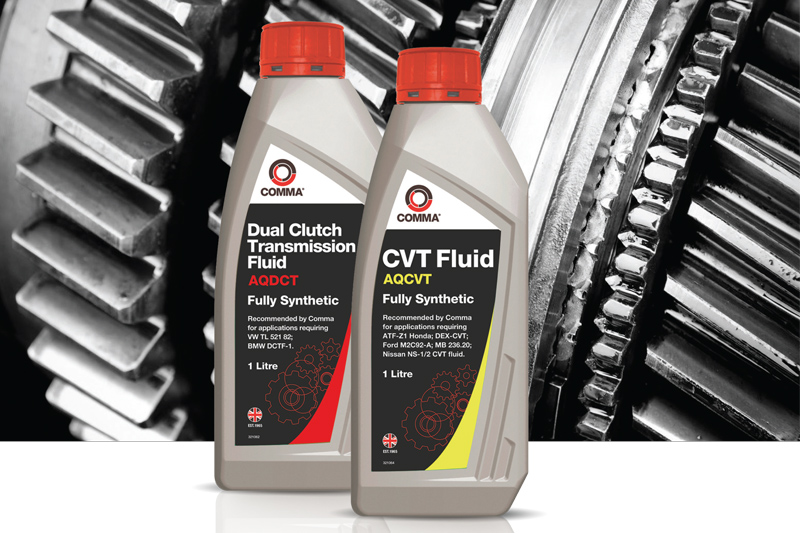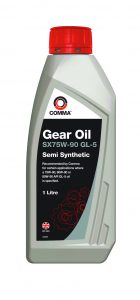
Drivers, more often than not, pick up on the more obvious vehicle faults, like problems that make a noise or form part of a standard vehicle once- over. Yet, checking on a vehicle’s transmission regularly gets forgotten about, so it’s imperative that technicians check on this for them. Comma Oil explains why.
Drivers are often reminded to check the oil and water levels of the engine. We also clean our cars regularly to prevent paint damage or corrosion and we keep a weathered eye on our tyre pressures tread depth. Worn brake pads and fan belts make their presence known very quickly, as do exhaust problems. But when was the last time your customers thought about the transmission?
The unsung hero of the mechanical world, the gearbox, converts every forward and backward desire into reality. It works hard – all the more so as the kerb weight of cars continues to shoot upwards, while increasingly heavy traffic in built-up areas requires more time slipping in and out of neutral than ever.
With a traditional manual gearbox, it is relatively easy to feel when the car’s transmission is starting to feel the strain. ‘Notchy’ gear changes – a stiffness getting in or out of gear, particularly in first and second, are a key indicator that all is not well.
Increasingly, however, that direct connection from driver’s hand to the transmission is being lost in favour of increasingly complex automatic and continuously variable transmissions in which problems will seldom give much notice.
Transmission fluid, just like motor oil, is a lubricant. Its purpose is to see to it that the various working parts of the transmission are not subject to damage, by keeping them lubricated and cool. It ensures the correct level of friction is applied, preventing slip and damage during gear changes.
In the process of doing its job, the transmission fluid can collect a considerable amount of debris. Gears grind against one another constantly for tens of thousands of miles between services. This means that when the lubricant is changed it is vital to ensure that you have the correct grade to make it through the next interval – which could be anything up to 60,000 miles away.
With such a wide range of oil grades, however, selecting the right grade is imperative, as Comma Oil Sales & Marketing Director Mike Bewsey explains: “The traditional choice between a manual or automatic transmission has become a lot more complicated thanks to the increasing number of technologies being used to make cars more energy efficient.
“A faster gear change is often a more energy efficient gear change, and this is entirely where manufacturer thinking on transmissions is rooted – which means a wider variety of transmission fluids to support them. Choosing the correct lubricant is now much more specialised and even more critical.”
The main alternative to the traditional manual gearbox is the Dual Clutch Transmission (DCT), which is usually operated semi-automatically. As the name suggests, DCTs have two clutches, enabling split-second transmissions by pre-selecting the next gear change. The driver operates a gear lever, buttons or ‘F1-style’ paddles to activate the electrohydraulics to rapidly change gear.
“Dual clutch transmissions are fundamentally very similar to the traditional manual gearbox,” Mike Bewsey continues. “Yet through adopting DCT, manufacturers have been able to shave up to 16% from their CO2 emissions when compared to a manual gearbox, and this is increasingly important in the marketplace.
“DCT is here to stay, which means being aware that the wrong type and viscosity of a fluid can cause slip and excessive wear to occur – a very expensive issue to resolve.”
Similar to the rise of dual clutch alongside manual transmissions, the automatic gearbox is being rivalled by Continuously Variable Transmission (CVT) technology. These systems ensure that the engine stays within the most energy efficient rev band whether accelerating, decelerating or at a constant speed.
It’s not entirely new technology, but it is only now that the complex hydraulic control system in which the transmission fluid must also work for the hydraulic components. The complexity and cleverness of the system takes time to understand – although the importance of having the right lubricant grade does not.
“In simple terms, if the fluid is very wrong, the hydraulic system will not work at all,” says Mike Bewsey. “If the oil is ‘close but not quite right’, then the likelihood is that the seamless gear might slip or, in time, suffer from excessive wear. Any of these symptoms will be evidence that the performance and life of the gear system is compromised – and that the car is not as efficient as it should be.”









